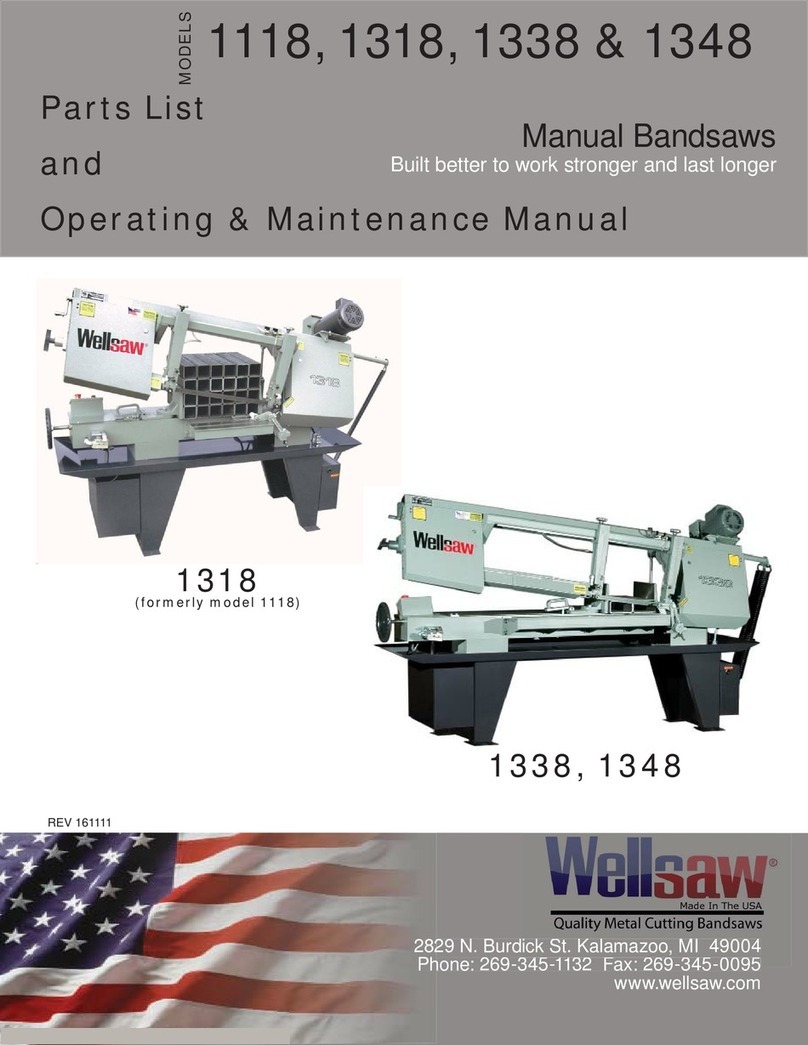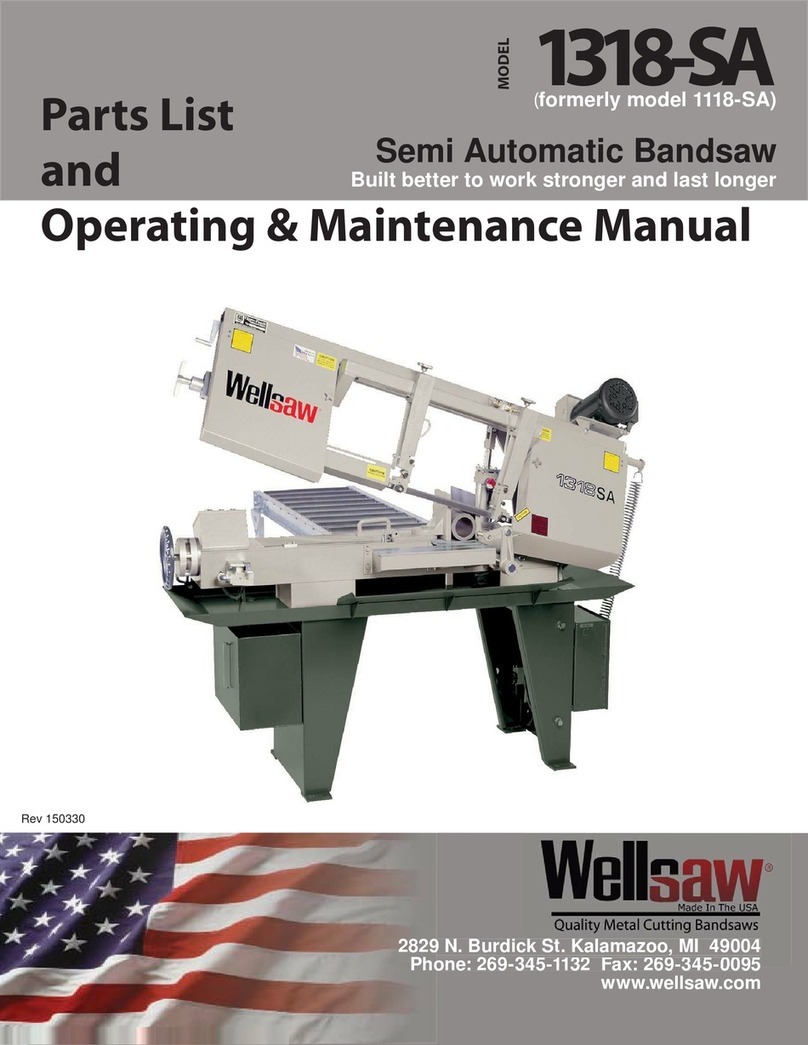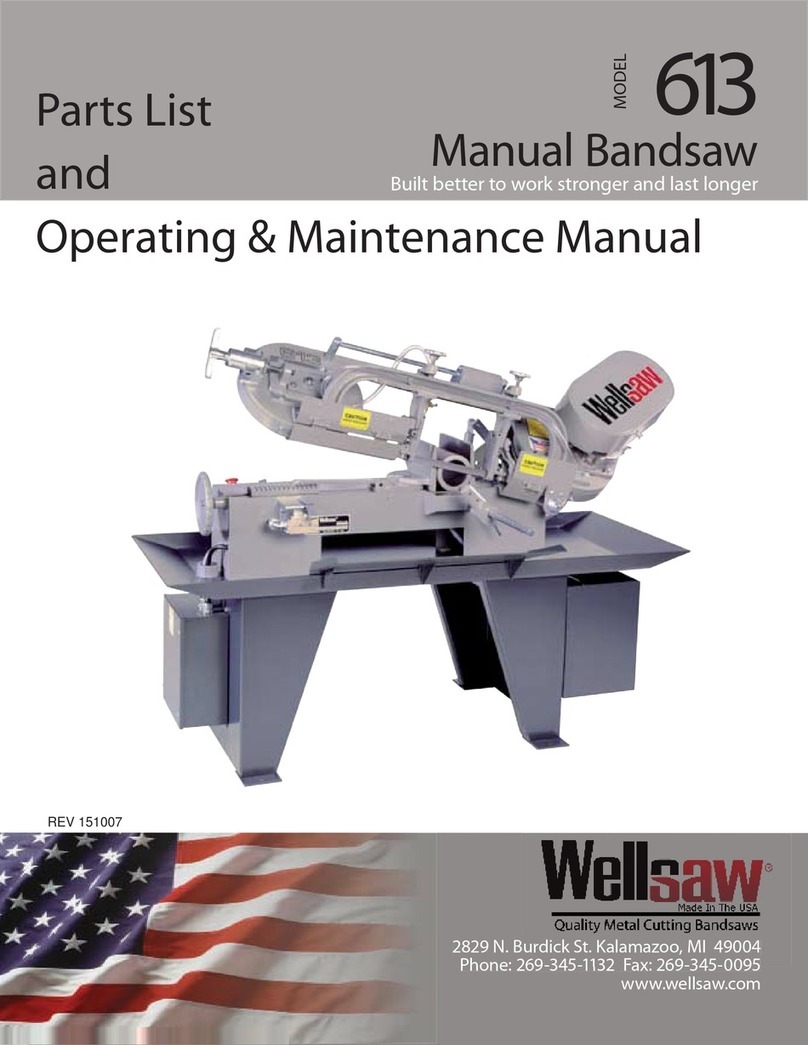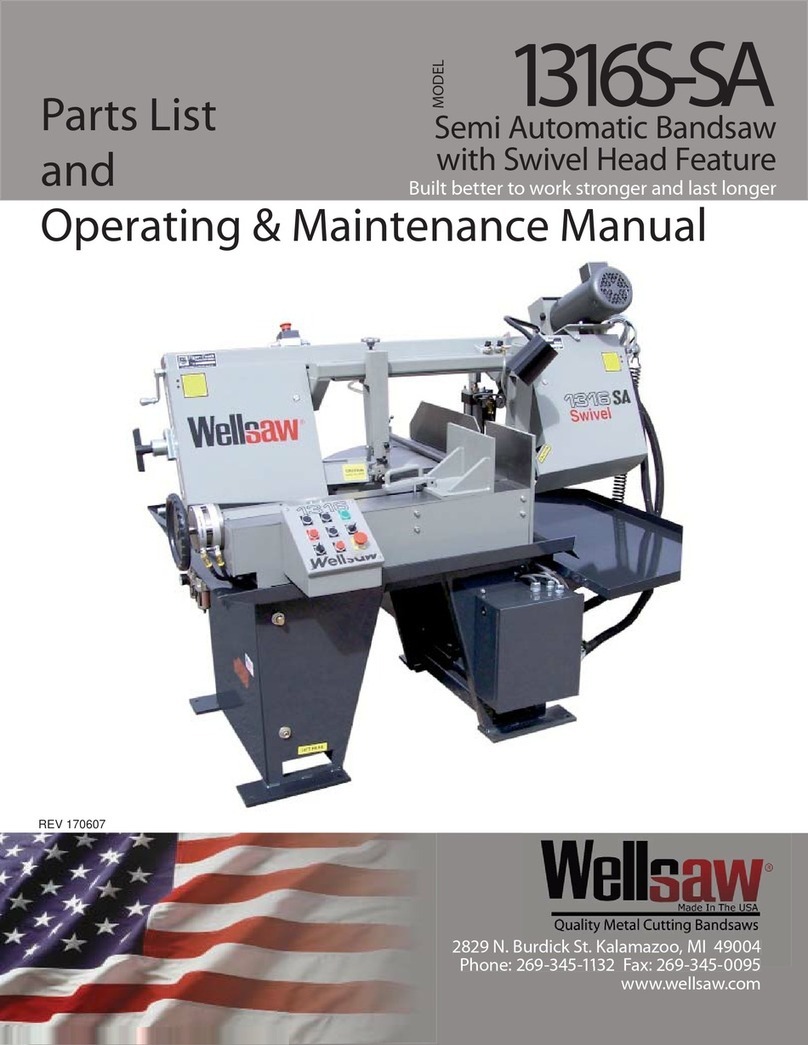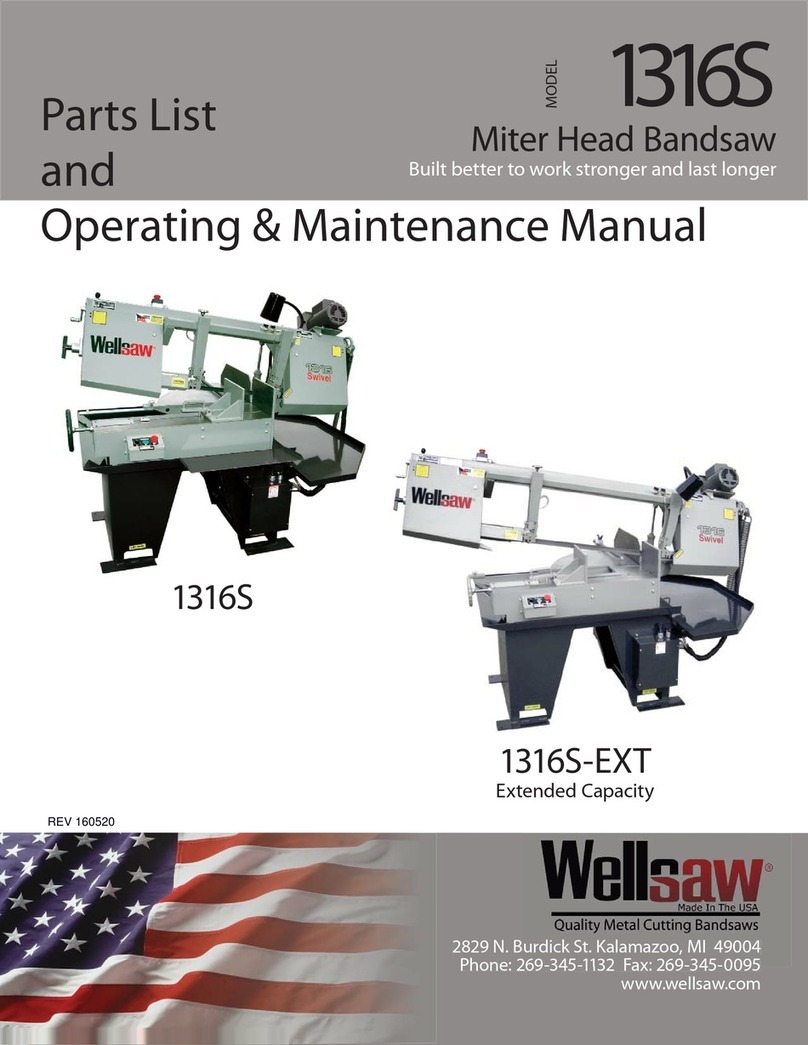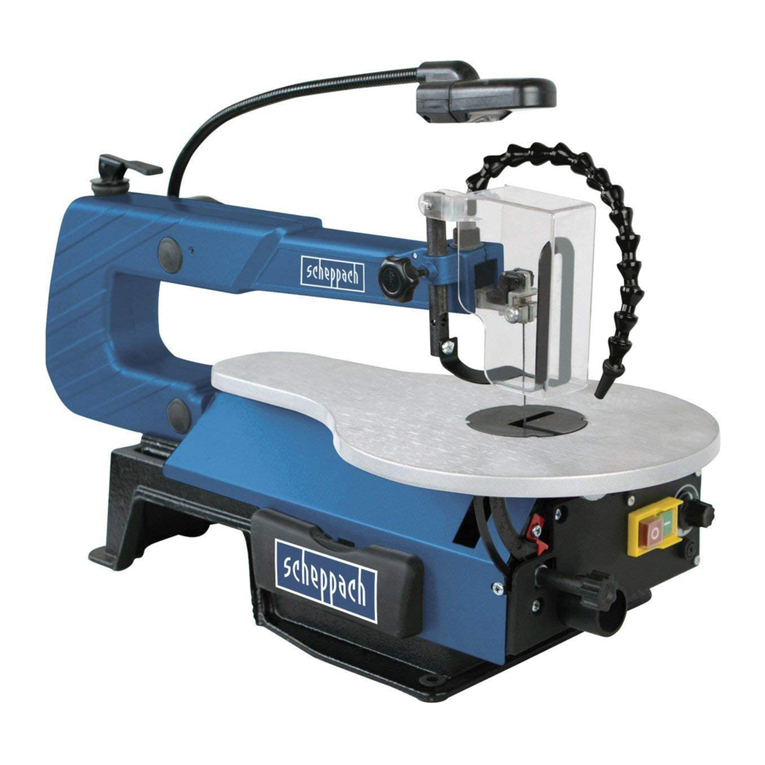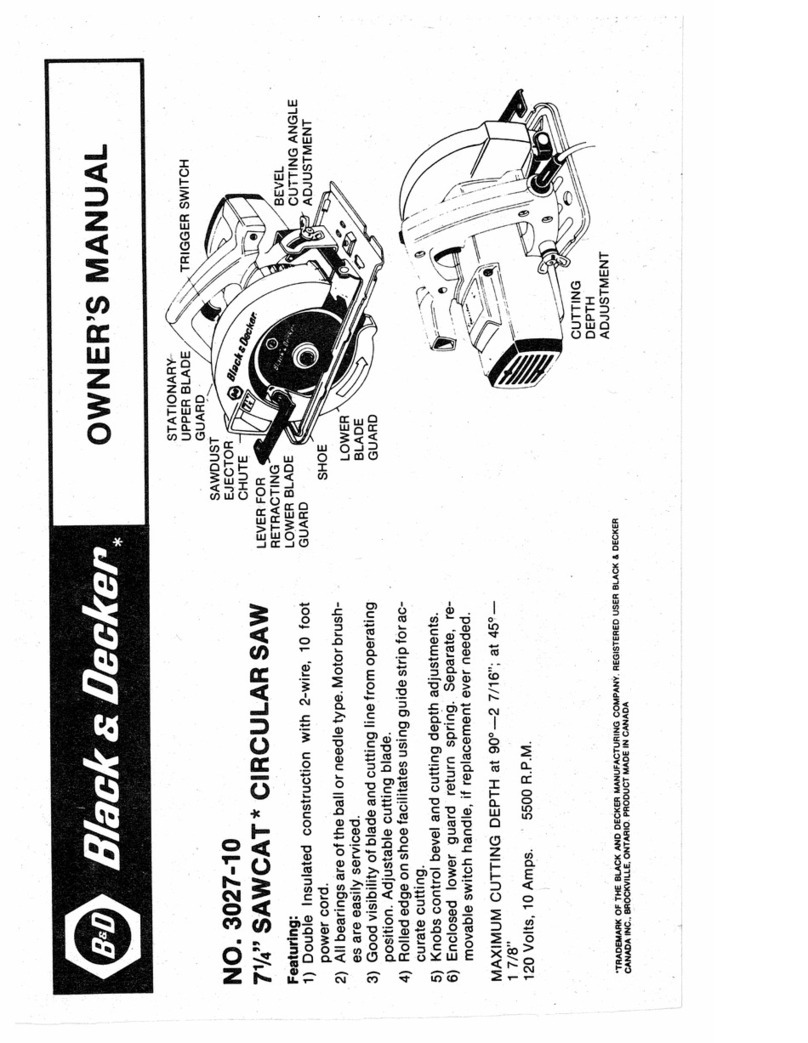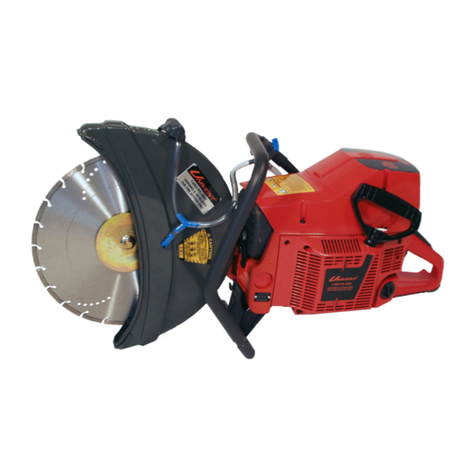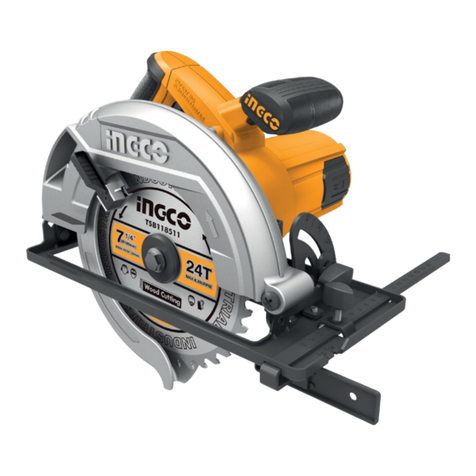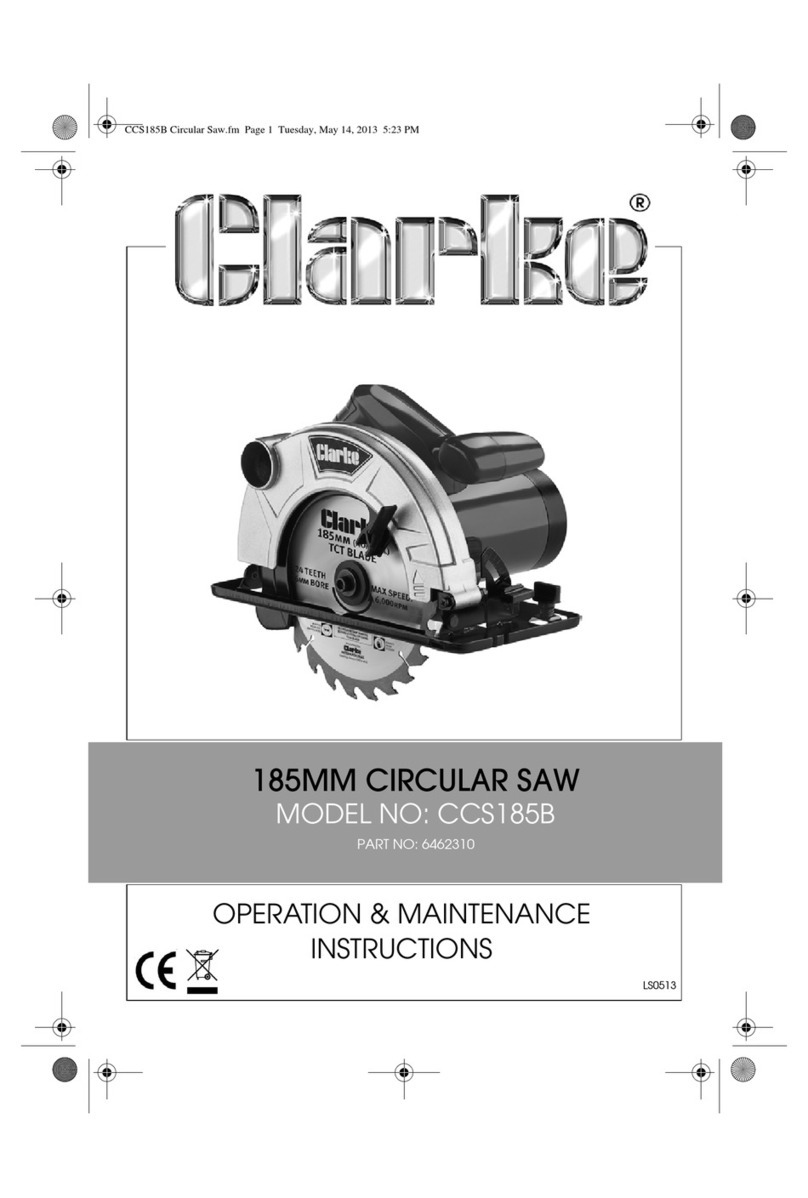
9
3. Horizontal Adjustment. Loosen the two cap screws [B]
securingthehorizontaladjustingblock(items11&12ofthe
parts drawing). Turn the top adjusting bolt (item 13 of the
parts drawing) to move the blade either in, toward the saw
bed, or out, away from the saw bed.
Normally, the blade comes off the Drive Wheel with a
minimum amount of adjustment needed in the Horizontal
Adjusting Block. The Idle End adjusting block is more
likely to require adjustment.
4. Blade Tilt. To ensure the blade is perpendicular to the
bed of the saw, loosen the two cap screw [C] holding the
Guide Support (28 & 29 of the parts drawing) and turn the
bottom adjusting bolt (13 of the parts drawing).
Set the combination square on the saw bed with the end of
the rule butted against the blade above the set of the teeth.
Use a 1-1/2 thousandths (.0015") shim and slide it along the
top and bottom edge of the rule where it meets the saw
blade. If the shim slides between the blade and the rule at
either the top or bottom, the blade guides must be adjusted.
5. Safety. Ensure that all bolts are properly tightened and
that all guards are in place before using the saw.
Wheel Pitch Adjustment
If the saw blade runs too low, runs off the wheels, or runs
too high and rubs the wheel flange, a wheel adjustment must
be made.
Loosen the blade before making the following adjustments.
Idler Wheel:
Blade running too low or off the wheel- adjust the idler
wheel block. Loosen the two cap screws in the block,
opposite the take up screw end, one-half (½) turn. Tighten
the opposite two cap screws one-half (½) turn. Repeat if
necessary.
Blade running too high and against the idler wheel flange-
The blade can become distorted, its top edge rolled over and
wheel flange will wear excessively.
To correct this, loosen the two cap screws closest to the take
up screw one-half (½) turn. Tighten the opposite cap screws
one-half (½) turn. Repeat if necessary.
Drive Wheel:
Blade running too low or off the drive wheel- Loosen the
two cap screws opposite the outside end of the wheel plate
one-half (½) turn. Tighten the two set screws on the same
end one-half (½) turn. Repeat if necessary.
Blade running too high, and against the drive wheel flange-
Loosen the cap screwsclosesttotheoutsideendofthewheel
plate and loosen the two set screws at the same time by the
same amount. Repeat if necessary.
Make certain all screws are tight after adjustments have
been made.
Guide-A-Matic©
The Guide-A-Matic is a patented self-adjusting mechanism
thatinsuresproperrollerguidetensionagainstthesideofthe
blade. To open the roller guide while inserting a new blade,
pull down on the knurled brass housing and rotate it. After
inserting the new blade, re engage the Guide-A-Matic by
pulling the knurled brass housing down and rotating it again
so that the mechanism closes and locks into posistion. (See
drawing and instructions on pages 17).
Gear Box Repair
1. Remove gear box from saw.
2. Remove four machine screws holding gear box
together.
3. Separate gear box by carefully prying castings apart at a
location near pulley shaft. Caution: Do not use excessive
force.
4. Once the gear box is open, the internal parts may be
inspected for wear.
5. Liquid plastic gasket is used to seal the gear case, Loctite
No. 51580 or equivalent.
6. Grease, Texaco Marfax ‘0' or equivalent is
recommended. The grease must have excellent clinging
characteristics. (See Lubrication).
Blade Brushes
Brushes should be cleaned frequently in kerosene and
reversed to take advantage of both rows of bristles.
For efficient cutting and blade life, keep blade brushes
adjusted so they are contacting blade teeth and replace them
when wore.
Motor Switch
The “Start-Stop” motor starter is provided with heater coils
to de-energize the circuit if an overload occurs. Allow the
coil to cool before trying to restart the motor.
Low/No Voltage Control also de-energizes the circuit and
prevents automatic restarts after power is restored. Allow
the coil to cool.
To stop the saw at any time,
press the stop button or
press down on the limit switch actuator
Stock Stop Feature
The saw is equipped with an adjustable stock stop for use
when making repeated cuts of the same length. The stop
length is adjusted with the same type of lock used on the
saw head angle lock. The stop can be adjusted width-wise
using the “T” handle on the lower portion of the support.
The stop mechanism can also be swung completely out of
the way. To do this, loosen the “T” handle two turns, lift
up on the stop and let it down behind the saw.



